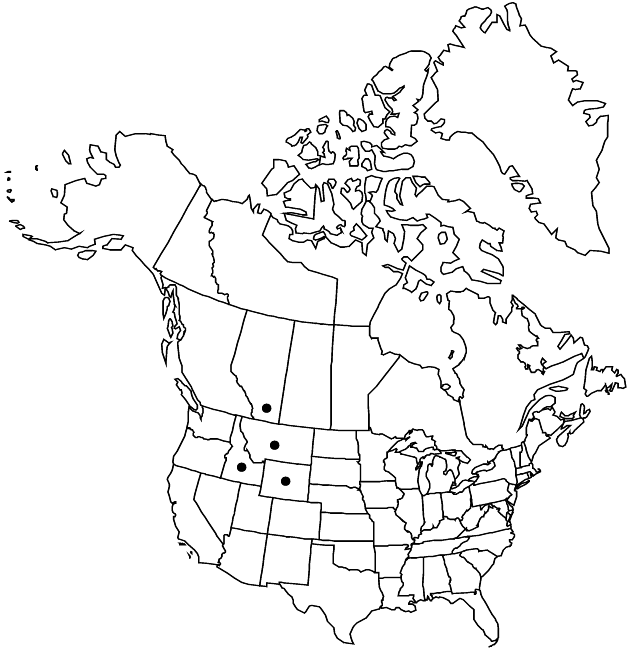Antennaria aromatica
Madroño 31: 109, fig. 1. 1984.
Dioecious. Plants 2–7 cm (stems stipitate-glandular). Stolons 0.5–2.5 cm. Basal leaves 1-nerved, usually cuneate-spatulate, sometimes oblanceolate, 5–16 × 3–10 mm, tips mucronate, faces gray-pubescent (and stipitate-glandular; fresh leaves citronella scented). Cauline leaves linear, 3–14 mm, not flagged (apices acute). Heads borne singly or 2–5 in corymbiform arrays. Involucres: staminate 4.5–6.5 mm; pistillate 5–7 (–9) mm. Phyllaries distally light-brown, dark-brown, or olivaceous. Corollas: staminate 2.5–3 mm; pistillate 3.5–4.5 mm. Cypselae 0.9–2 mm, sparingly papillate; pappi: staminate 3–4 mm; pistillate 4.5–5.5 mm. 2n = 28, 56, 84.
Phenology: Flowering mid summer.
Habitat: Subalpine limestone talus
Elevation: 1600–3000 m
Distribution

Alta., Idaho, Mont., Wyo.
Discussion
Known only from the northern Rockies, Antennaria aromatica is characterized by glandulosity, cuneate leaves, and odor of citronella in crushed leaves of living material. It is most closely related to A. densifolia of the Northwest Territories and Yukon (R. J. Bayer 1989c). Some collections of pistillate plants from Colorado and other areas of the Rockies superficially resemble A. aromatica and undoubtedly have A. aromatica in their parentage. They are non-glandular and odorless and are closer to the type of A. pulvinata, which is included in the circumscription of A. rosea, as A. rosea subsp. pulvinata (Bayer). Antennaria aromatica is a sexual progenitor of the A. rosea and A. alpina polyploid complexes.
Selected References
None.